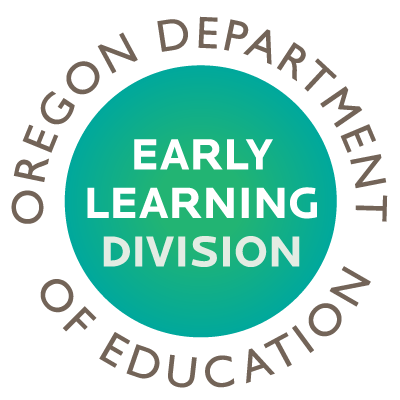News
Early Care and Education Workforce Struggles with Inequities in Unemployment
(Salem, Ore) – New research shows the COVID-19 pandemic impacted Oregon’s child care and early care and education programs’ ability to remain open and serve families. The Oregon Early Learning Division (ELD) commissioned Portland State University and OSLC Developments, Inc. to conduct this research. The study involved collecting a statewide survey of 3,035 early educators during March of 2021. The findings highlight inequities, including low wages and layoffs, particularly for early educators of color.
The COVID-19 pandemic resulted in program closures and disruptions to workforce employment. Programs were operating at two-thirds (67%) of their desired capacity and half (49%) reported at least one closure in the past year. Even when programs stayed open, they reduced or furloughed their workforce. Teacher assistants and aides, those most often receiving the lowest salary, were most likely not to be employed at the time of the survey. These members of the workforce were also more likely to be people of color and to be multilingual.
“These are critical losses, particularly from the standpoint of diversity, equity, and inclusion,” said Katherine Pears, a senior research scientist at OSLC Developments, Inc. “The loss of these providers may mean that multilingual children and families will have even fewer opportunities to use child care in which staff reflect their cultural background and who speak the child’s language, deepening inequities.”
This finding is consistent with results of a 2020 Oregon family survey, which also found families expressed concerns about finding culturally responsive and culturally specific early care and education opportunities.
Another key finding shows public funding made a critical difference in whether programs were currently open as of March 2021. Over half (54%) of child care program directors/owners reported receiving state or federal public funding. Programs who received public funding were more likely to be currently open (92.2%) compared to those who did not receive any public funding (81.5%).
“This study emphasizes what we have known to be true – our early learning educators need and deserve a living wage and state and federal funds are necessary to support this critical infrastructure,” said Oregon’s Acting Early Learning System Director Alyssa Chatterjee. “While Oregon has been fortunate to receive relief and recovery funds, it’s not enough – the federal government must step up to provide the resources needed to adequately support our early learning workforce.”
To date, 4,000 Oregon child care programs operating through the pandemic have been awarded more than $80 million in grant funding and supplies to support their critical role in serving children and families. Findings from this research will help inform how more resources are directed to child care providers across the state. In mid-September, ELD anticipates distributing approximately $224 million in American Rescue Plan Act Child Care Stabilization funds directly to child care providers. Additionally, $125 million in federal relief is being used to reduce child care subsidy copays for families for the next four years, allowing providers to have a more reliable income stream.
The complete findings from “The Effects of COVID-19 on Oregon’s Early Care & Education Workforce and Programs” report can be found on ELD’s website: https://oregonearlylearning.com/PDGAssessment.
###



